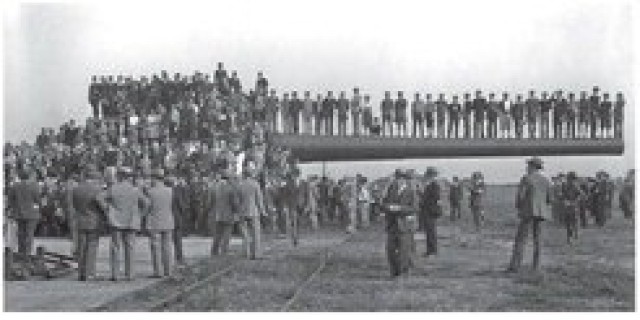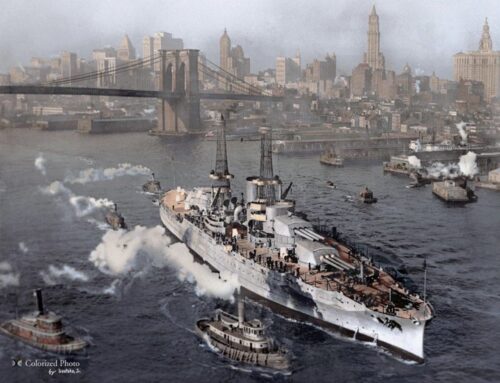Aberdeen Proving Ground has played major role in shaping Army technology since WWI
Published: 13 June 2025
By Rachel Ponder and Ann Gonzalez
via the U.S. Army website

APG framed
To celebrate the Army’s 250th birthday this year, we are looking back at how Aberdeen Proving Ground has played a major role in shaping Army technology since its establishment in 1917. APG is the Army’s oldest active proving ground and, despite its age, is known as “the home of innovation.” APG plays a vital role in Army modernization efforts by developing cutting-edge technologies to support the warfighter. With APG’s extensive efforts, America’s service members are ready, modern, and prepared to defeat and destroy those who threaten our homeland, our partners and allies, and our American way of life.

U.S. Army Soldiers stand with the “The Big Gun” in the early 1920s. Originally intended for use on battleships and then coastal defense at seaports between 1920-1946, this gun was built on APG in 1922 for testing purposes. (U.S. Army photo)
APG founded out of necessity during WWI
APG was founded six months after the U.S. entered World War I. The Army needed a new site for testing artillery and weapons when Sandy Hook Proving Ground, New Jersey was deemed too small and located in an area too densely populated to support wartime operations.
Col. Colden Ruggles was tasked with finding a location for a new proving ground, and after weighing several options, selected Harford County, Maryland, because it provided the land and the isolation the Army required.
On Oct. 14, 1917, President Woodrow Wilson formally established the new proving ground at Aberdeen. On Jan. 1, 1918, Ruggles became the first commanding officer of the installation.
Richard Wiltison, command historian of the U.S. Army Combat Capabilities Development Command, explained that in the early days, a “whole array” of testing took place, which made APG a unique installation. According to Wiltison, World War I was considered the first truly mechanized war, with the introduction of wheeled vehicles, tanks, airplanes, and lethal gasses.
→ Read the entire article on the U.S. Army website.
External Web Site Notice: This page contains information directly presented from an external source. The terms and conditions of this page may not be the same as those of this website. Click here to read the full disclaimer notice for external web sites. Thank you.



